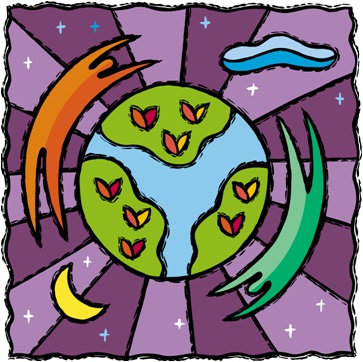Simplicity in the Balance
Simplicity's advantage lies in brute-force processing and easy scalability. Certainly, one should not make things less simple than required. However, there will always need to be a balance. It is important to THINK about this balance and also LEARN from successes and mistakes. A very high-level think-tank is necessary. Micro-financing parties frequently just ‘get on with it’(?) To us, this is not a venue towards sustainability. In any complex domain, if you do not appropriately constrain complexity, difficulties grow exponentially and readily become inextricable. Therefore, we need to constrain complexity from the start by appropriately structuring the problem space. We need to set up a clearing house of concise and transparent theoretical knowledge, continuing analysis and practical cases in combination with transparent search modalities and, of course, all live on-line.
Very Modular Approach (High Level)
Practically, we build upon a modular approach at different layers. This enables within the modules an optimal degree of freedom while the whole is optimally containable.
The internet is basic in this. A stream of information is engendered in the way of stories and lots of pictures of what is happening inside the modules.
People/companies who sponsor projects can see at a very regular basis how projects evolve. The daily life, the good things and the bad things.
 For instance, school A in a materially developed country can 'patronize' school B in a developing country. School A can organize a fund-raising activity. Children get involved directly. School B can deliver products (such as children's art) to be used in this fund-raising.
For instance, school A in a materially developed country can 'patronize' school B in a developing country. School A can organize a fund-raising activity. Children get involved directly. School B can deliver products (such as children's art) to be used in this fund-raising.
A tight but very human 'control' can be organized through peer-reviews in the developing areas themselves with the use of structured proceedings.
Practical experiences are validated, structured, critically thought over, and made available in a 'knowledge base' with intuitive look-up facilities so that people of all parts of the world can take lessons from each other, ask questions about how-to do very specific things, success stories, etc.
‘Circles of Entrepreneurs’
In a region (can be a city, a village…), there may be a number of ‘Circles Of Entrepreneurs’ (COEs). One person per circle, the ‘Circle Responsible’ (CR) is responsible for a COE. He organizes the flow of images and text. A typical COE contains 12 individuals who know each other through regular meetings. This gives to the project also a community-building aspect. An individual can be one person, a family, a cooperation…
Per region there are 1 or 2 ‘Region Responsibles’ (RR). Their responsibilities are to control COEs through CRs, report to us, and co-create our on-line clearinghouse.
Travelers (T) go to regions for audits.
We see each money-needing individual apply as member to a ‘circle’. The members of a circle are partly responsible for each other. As incentive: 10% of ‘profit’ goes to the circle, is divided by N (number of participants in circle) and redistributed to each of N.
 How circles operate, is backed by our to-be-worked-out rules/recommendations. There are regular meetings, reports of/to each other etc. Since we fully operate in cities, we can make use of the proximity of individuals and circles to each other.
How circles operate, is backed by our to-be-worked-out rules/recommendations. There are regular meetings, reports of/to each other etc. Since we fully operate in cities, we can make use of the proximity of individuals and circles to each other.
Entering a circle (becoming a member) = through a serious intake (formalization by us). This encompasses at least:
- being able to read and write about the POTP concepts and ethics, as well as a personal view on this. This is done through a number of questions requiring small answers;
- being judged positively through personal talks (video tool) by 4 trusted members (TM), being a member for at least one year and having contributed positively.
Every individual circle also reports to us, overtly and anonymously.
Money flow
Resource providers give money. This money is used to organize things.
Interest-free loans are given to COEs.
Entrepreneurs lend money. They pay back with interest. This interest goes to the COE and is redistributed according to guidelines.
When at the end of the year, we have a surplus of money, we give ‘overflow’ to social project(s) in the neighborhood of well-performing COEs, under their name. Such a project is chosen/developed by a Traveler and RR.
For each participating individual, the “what’s in it for me” needs to be taken care of in a very clear way. No fuzziness.
Unique elements and element types
Each individual element (COE, RR, T…) has a unique number composed of 8 characters (letters, numbers). E.g. #532HAB37
Each element-type has a template. Each element has a description (template filler).
Entrepreneur of the day
Each day, an Entrepreneur is chosen by the Traveler, on the basis of personal appreciation and specific parameters.
-> fully automatic: information and some pictures of this Entrepreneur come on the Home page.
Case studies
by Traveler and RRs. -> rather in-depth. We want as much as possible to foresee all possibilities.
“Each Entrepreneur’s failure is a disaster that we want to avoid.”
“Shared responsibility is double responsibility for each.”
 Image flows
Image flows
Lots of images. Each image is accompanied by a little text about it, between 50 and 100 characters. We need a structure for how to manage this. We can use these images in several ways.